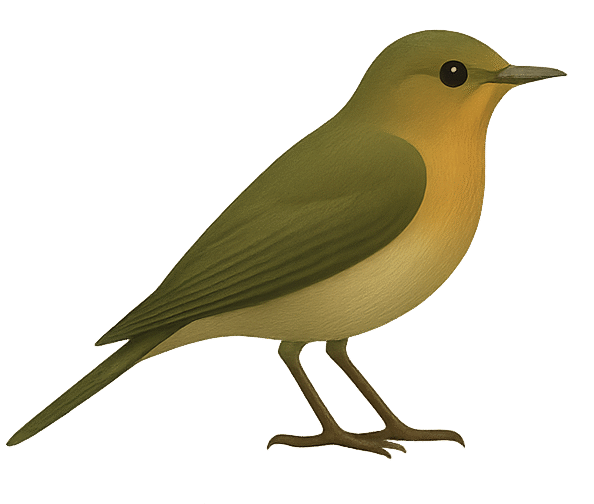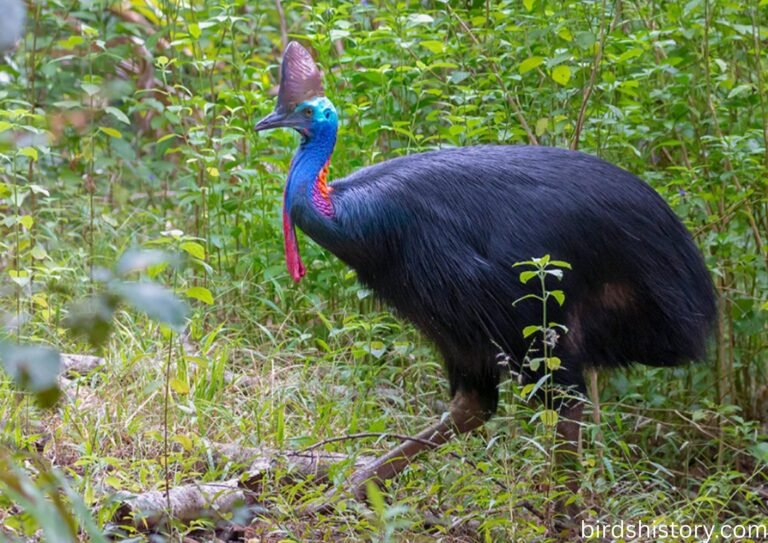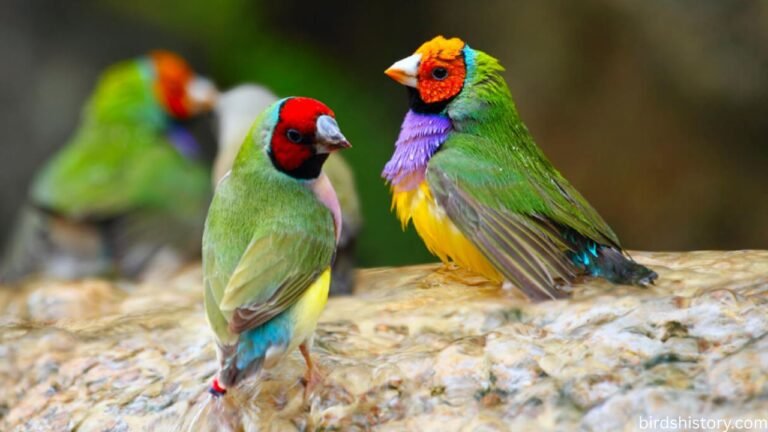The Snowy Owl: A Majestic Hunter of the Arctic
Few birds inspire as much awe and fascination as the Snowy Owl. With its brilliant white plumage, piercing yellow eyes, and commanding presence, this owl seems almost mythical, like a creature from a storybook. Unlike many other owls that live in forests or deserts, the Snowy Owl thrives in the frozen tundras of the Arctic, where temperatures drop far below zero and the The area is covered with snow for the majority of the year.
One reason the Snowy Owl is so intriguing is its unusual daytime hunting behavior. While most owls are nocturnal, the Snowy Owl is often active during daylight, soaring gracefully across the tundra in search of prey. A fun fact? A single Snowy Owl has the capacity to consume over 1,600 lemmings annually, establishing it as one of the most efficient natural rodent predators.
In this article, we’ll dive into the Snowy Owl’s classification, appearance, habitat, diet, behavior, reproduction, conservation status, and more—painting a full picture of this incredible bird.
Taxonomy / Classification
- Common Name: Snowy Owl
- Scientific Name: Bubo scandiacus
- Family: Strigidae (True Owls)
- Order: Strigiformes
- Class: Aves
Also read: /southern-cassowary/
The Snowy Owl is closely related to other large owls, but its adaptations for survival in Arctic conditions make it one of the most specialized owl species in the world.
Physical Description
The Snowy Owl is not only remarkably beautiful but also ranks as one of the largest owls globally.
Size and Build
- Height: 20–28 inches (51–71 cm)
- Wingspan: 4.5–5.5 feet (137–165 cm)
- Weight: 3.5–6.5 pounds (1.6–3 kg), with females being heavier than males.
Plumage
- Males: Almost pure white, with few dark markings.
- Females: White with more black or brown barring, offering better camouflage when nesting.
- Younger owls are darker and have more barring, and they become lighter in color as they get older.
Unique Traits
- Eyes: Bright yellow and very large, adapted for spotting prey even in low light.
- Beak: Short, black, and mostly hidden by facial feathers.
- Feet: Covered with thick white feathers to protect against freezing Arctic temperatures.
The combination of their ghostly white feathers and powerful build makes them one of the most instantly recognizable birds in the world.
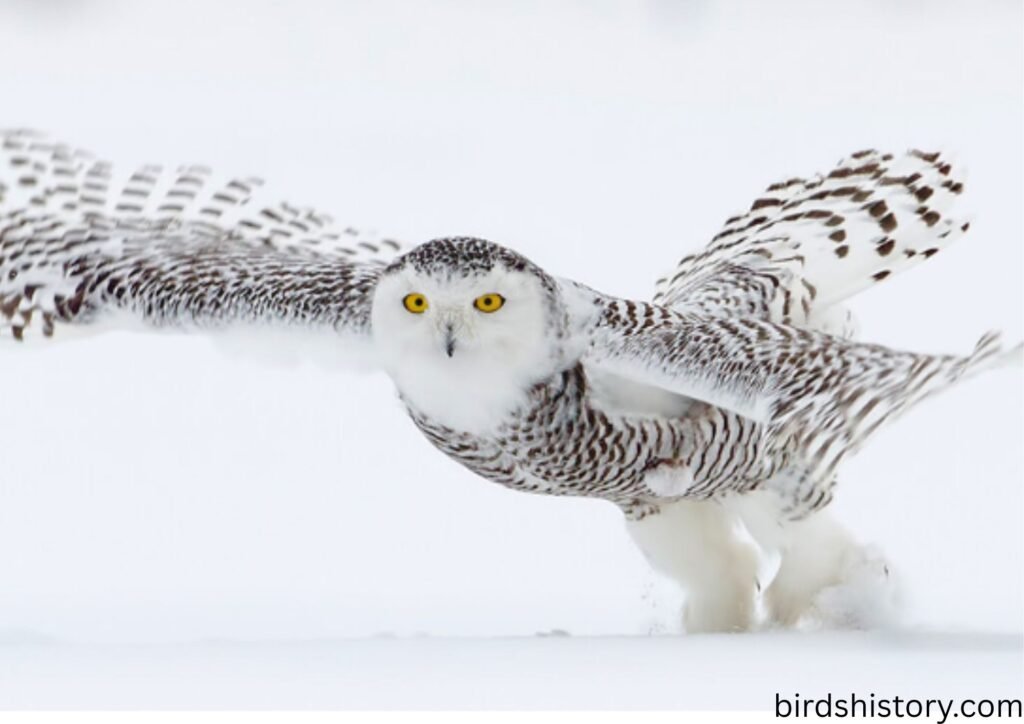
Habitat and Range
Snowy Owls are Arctic specialists, but they are also known for their surprising migrations.
Primary Range
- Found across the Arctic regions of North America, Europe, and Asia.
- In North America, their breeding grounds are located in Alaska and northern Canada.
- Populations also thrive in Greenland, Russia, and Scandinavia.
Preferred Habitat
- Open tundra, grassy fields, and coastal dunes.
- They favor environments without trees, as their white feathers provide excellent camouflage against the snow and ice.
Migration Patterns
- Unlike many birds, Snowy Owl migrations are irregular and depend on food availability.
- In years when lemming populations crash, Snowy Owls move southward in large numbers, sometimes as far as the northern United States, known as an irruption.
- These irruptions bring Snowy Owls to unexpected places like airports, farmland, and even city rooftops.
Diet and Feeding Habits
Snowy Owls are carnivorous predators, specializing in small mammals but capable of taking down larger prey.
Primary Diet
- In the Arctic, their primary source of food is lemmings and voles.
- Other small mammals: Rabbits, hares, and squirrels.
- Birds: Ducks, ptarmigans, geese, and seabirds.
Hunting Behavior
- Unlike most owls, Snowy Owls often hunt during the daytime.
- They perch on high spots or hover in the air before swooping down on prey.
- With strong talons and keen eyesight, they are efficient hunters.
Interesting Feeding Fact
During the breeding season, a single pair of Snowy Owls may catch dozens of lemmings each day to feed their growing chicks.
Behavior and Lifestyle
The Snowy Owl’s lifestyle is shaped by its Arctic environment and seasonal challenges.
Social Behavior
- Generally solitary outside the breeding season.
- During winter migrations, several Snowy Owls may share the same area if prey is abundant.
Flight Style
- Strong, direct flight, more like a hawk than a typical owl.
- Can glide low across the tundra or soar high to spot prey.
Vocalizations
- Deep hooting calls, especially during courtship.
- Alarm calls and hisses when defending territory or young.
Mating Rituals
- Male Snowy Owls try to attract females by performing aerial displays, which involve diving and calling out.
- Another part of their courtship ritual is for males to offer food to females.
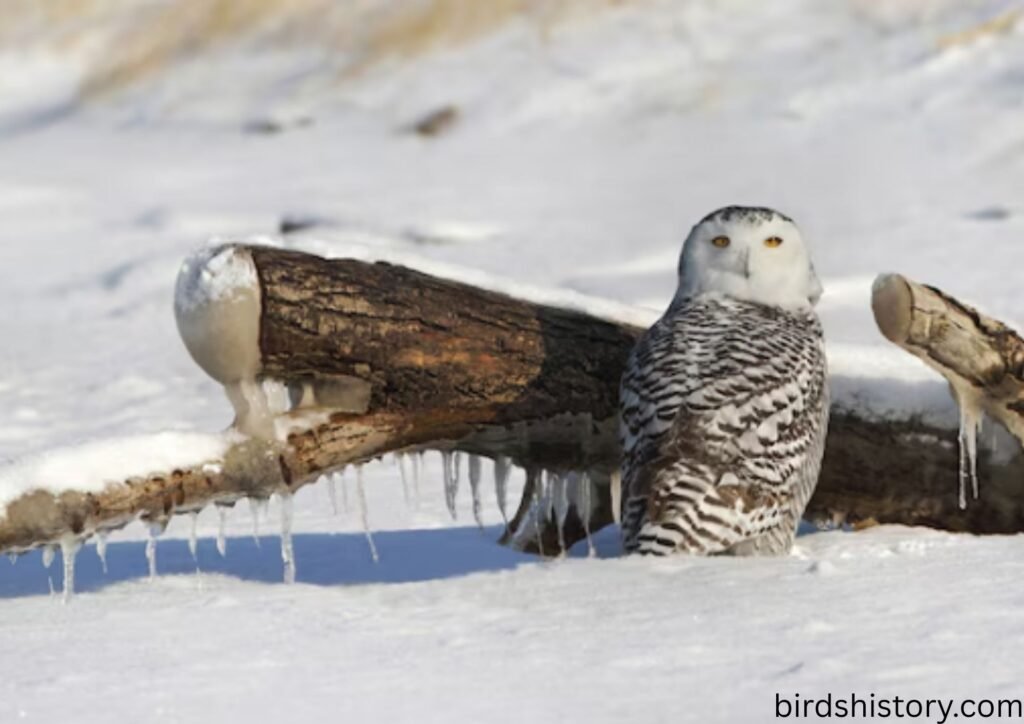
Reproduction and Lifespan
Breeding success for Snowy Owls depends heavily on food availability.
Breeding Season
- Occurs from May to September in the Arctic summer.
Nesting
- They do not build traditional nests but scrape shallow depressions in the ground.
- Nests are often located on slightly elevated areas for good visibility.
Eggs and Incubation
- Females lay between 3 and 11 eggs, depending on food abundance.
- The incubation period for eggs is approximately 32 to 34 days, and the female is primarily responsible for it.
- The male provides food during this period.
Lifespan
- In the wild: 10–15 years.
- In captivity: Can live up to 28 years.
Predators and Threats
Snowy Owls are apex predators in the Arctic, but they still face challenges.
Natural Predators
- Foxes and wolves may prey on eggs or chicks.
- Other birds of prey sometimes compete for food or attack juveniles.
Environmental Threats
- Climate change is the biggest threat, reducing prey populations and altering breeding grounds.
- Oil drilling and other human activities in the Arctic are causing significant damage to their natural habitat.
- They face the danger of crashing into vehicles, power lines, and aircraft when they travel south in large numbers.
Conservation Status
The IUCN Red List has classified the Snowy Owl as Vulnerable, indicating that the species faces a high risk of extinction in the wild.
Population Trends
- Global population estimated at 200,000–300,000 individuals.
- Numbers are declining, especially in North America, due to shrinking lemming populations.
Conservation Efforts
- Protected by international agreements such as the Migratory Bird Treaty Act.
- Research projects track movements with satellite tagging.
- Conservation groups advocate for protecting Arctic habitats from industrial development.
Interesting Facts about Snowy Owls
- These owls are a rare exception, as they hunt during the day instead of at night like most others.
- Their feathers are so insulating that even their toes are covered in thick down.
- Snowy Owls appear in Harry Potter, where Hedwig (Harry’s owl) made them even more famous.
- They can detect prey even under thick snow, using their acute hearing.
- Females are larger and more heavily marked than males.
- Snowy Owls are capable of consuming large animals, such as ducks and rabbits.
- Their white plumage is perfect camouflage against Arctic snow.
- They are nomadic, constantly moving to follow prey populations.
- In Inuit culture, the Snowy Owl is often seen as a symbol of wisdom and endurance.
- Their wings make almost no sound when flying, giving them stealth in hunting.
Conclusion
The Snowy Owl is one of nature’s most breathtaking birds. From its striking white plumage and piercing gaze to its incredible hunting skills, this owl is built to survive one of the harshest environments on Earth. Its story, however, is also one of fragility—its survival depends on healthy Arctic ecosystems and abundant prey.
Studying the Snowy Owl serves as a reminder of the intricate connections that exist in nature—between a hunter and its food, a bird and its home, and eventually, people and the natural world. Protecting this species is not just about saving a single bird; it’s about safeguarding the Arctic wilderness itself.
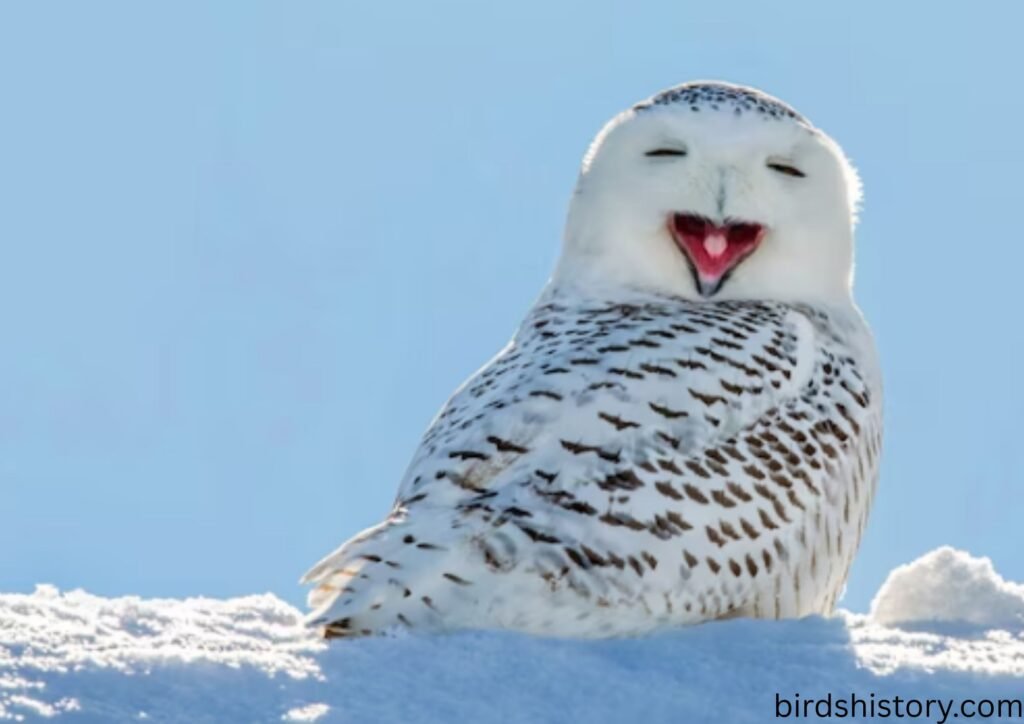
FAQs
1. Where do Snowy Owls live?
They live mainly in the Arctic regions of North America, Europe, and Asia.
2. What do Snowy Owls eat?
Primarily lemmings and other small mammals, but also birds like ducks and ptarmigans.
3. Are Snowy Owls nocturnal?
Unlike most other owls, they are often active during the day.
4. How big is a Snowy Owl?
Standing at a height of approximately 20 to 28 inches, they have a wingspan that can reach up to 5.5 feet.
5. How long do Snowy Owls live?
In the wild, around 10–15 years, and up to 28 years in captivity.
6. Do Snowy Owls migrate?
Yes, they migrate irregularly depending on food availability, sometimes traveling far south.
7. Are Snowy Owls endangered?
They are listed as Vulnerable due to climate change and declining prey.
8. Why are female Snowy Owls more spotted?
Their barred plumage offers camouflage when nesting on the ground.
9. How many eggs do Snowy Owls lay?
They lay between 3 and 11 eggs, depending on food abundance.
10. Why are Snowy Owls famous in pop culture?
Because of Hedwig in the Harry Potter series, which boosted their global recognition.
